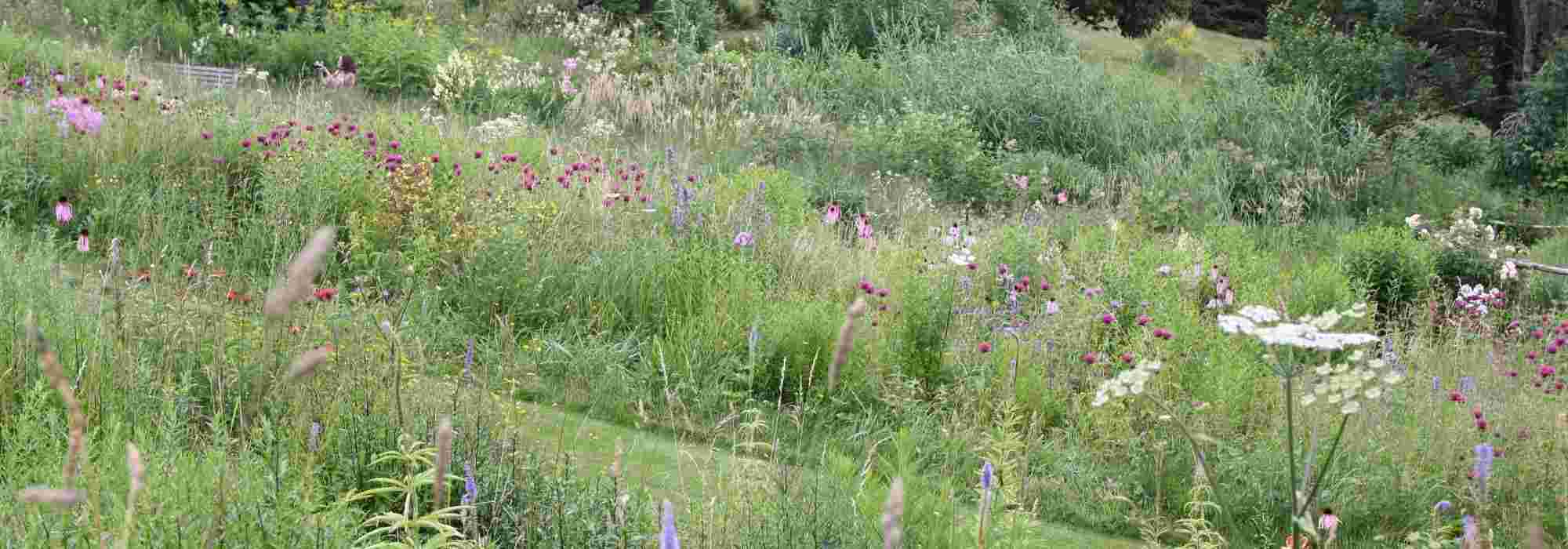
10 emblematic perennial plants for naturalistic gardens
Robust and maintenance-free
Summary
Naturalistic gardens combine the wild beauty of sturdy, flowering perennials with the current trend to let the garden be itself a little, while retaining a minimum of control. Naturalistic gardens, as usually designed, are particularly beautiful in summer, come into their own in autumn and remain present in winter thanks to the dry flower stalks of perennials and grasses.
Sadly, spring is often a little overlooked but it is easy to make up for it by planting here and there a profusion of spring bulbs that will brighten the early season.
A haven for small wildlife, especially insects, this type of garden seeks to imitate nature while working with it. Indeed, these gardens require little maintenance after planting, apart from a bit of “tidying” in spring, because effort is made to plant only robust plants adapted to soil and climate. They are then allowed to naturalise and the occasional beautiful native that arrives by chance in the garden is gladly accepted.
Naturalistic gardens are found across the world: in Great Britain, Germany, Belgium, the Netherlands, the United States… but oddly only a few tentative schemes have appeared in France. So be pioneers by taking inspiration from our selection of ten iconic perennials for naturalistic gardens!
Buenos Aires vervain and hastate vervain: slender but sturdy
Buenos Aires verbena and hastate verbena are charming, tall perennials with a very natural habit. They bear elegant mauve flowering, which creates an impact alongside grasses and adds lightness among more compact perennials. These verbenas are very easy to grow. They thrive in sun, in ordinary, well‑draining soil that stays cool, although they tolerate summer drought particularly well.
Unfortunately, Verbena bonariensis and Verbena hastata do not live very long, but don’t worry, they will self‑seed all over your garden, provided birds leave some, as they adore the seeds in autumn. It should also be noted that these plants are very melliferous and nectariferous and consequently attract a host of pollinating insects and butterflies.
→ There are, of course, other verbenas: lemon verbena, aromatic verbenas or even the so‑called “garden verbena”. To learn about them, recognise them and to grow them, read: Verbenas: planting, pruning and care.
You may also read
How to stake a perennial plant?Echinacea: large red, pink and white daisy-like flowers...
Echinaceas, whose most famous is probably Echinacea purpurea, are charming American plants that delight us with generous flowering resembling simple purple, pink or white daisies (or even yellow ones if Rudbeckias are included…). They flower throughout summer in the garden, from June until the beginning of autumn. True emblems of naturalistic gardens, the head inflorescences of echinaceas form very colourful bouquets that catch the eye of both us and butterflies, which literally dive onto the flowers. Relatively easy to grow, Echinacea likes to be planted in full sun in fertile, fresh and well-drained soil. Once established, it will fear neither wind, nor heat, nor summer drought.
→ Echinaceas are easy to grow but if you have the slightest doubt, you will surely find the right advice in our article: “Echinacea: sowing, cultivation and maintenance“
Asters: a shower of stars throughout autumn
Asters are easy-to-grow perennial plants that are covered in very bright, star-shaped flowers. Airy and light, tall varieties add much volume when placed at the back of a border. But there are also lower-growing varieties or species. At 90 cm tall, Aster cordifolius ‘Ideal’ is rather mid-sized and lives up to its name: it is indeed an ideal, robust perennial with generous flowering. Asters are hardy, undemanding autumn perennials. They spread easily thanks to their rootstock and can even naturalise. They are also very easy to transplant or divide: you can replant them elsewhere or share them with friends. Their only drawback is their relative susceptibility to powdery mildew, but simply choose resistant varieties for that, for example Asters novae-angliae. Asters are best planted in full sun in any well-drained soil.
→ Find over 100 varieties of asters in our online nursery, as well as all our tips for growing them in our factsheet: “Aster: planting, growing and caring for”
You may also read
Melica: planting, growing and careEchinops ritro: prickly... but beautiful!
Echinops are a kind of thistle with thorny foliage, superb in summer thanks to their terminal inflorescences of metallic blue, slightly silvery. Flowers are actually small blue spheres, bristly with tiny spikes. Although their colour is striking and their shape very graphic, echinops, such as Echinops ritro, blend admirably into a wild meadow made up of perennials and grasses. Melliferous and nectariferous, these perennials will also attract many insects. Echinops is a robust, undemanding perennial, plant in sun and in well-draining soils. This “thistle” tolerates drought well and will even tend to naturalise.
→ Discover all our echinops varieties and find our advice on how to grow them in our factsheet: “Echinops: planting, growing and care“
Knautias and scabious: charming wildflowers, highly floriferous
Knauties are plants, mostly perennials, that flower for a long time, from spring through to October. The flowers, light and delicate, look like pom-poms set at the end of very flexible stems. Often mauve-violet in colour, as with the field scabious, they appear purplish-red in the very handsome Knautia macedonica, the little Macedonian scabious. Knauties and scabious are ideal plants for naturalistic gardens thanks to their wild habit and remarkable hardiness. These plants establish quickly, tend to naturalise and tolerate drought very well. Plant knauties in full sun and in well-drained soil.
→ Find our knauties in our online nursery, as well as our tips to succeed with them in “Knautia, knautie: planting, cultivation and maintenance“
Please note: knauties and scabious too small for you? Try instead the giant Cephalaria gigantea which towers to almost two metres…
Stem-clasping persicarias: light and elegant.
Another plant that delights pollinators and butterflies! Persicarias, also known as knotweed or Polygonum, are charming perennials with long, generous flowering. From July onward, they are covered with spikes of flowers in pink, white or red tones that last until first frosts. These very thin inflorescences, borne on tall, thin stems, lend a lovely wild look to the garden, as with Persicaria amplexicaulis ‘Rosea’ with its pastel-pink flowers. Persicarias combine wonderfully with grasses to create very natural-looking gardens. These perennials thrive in sun or partial shade but in cool, even damp soil. Although Persicaria is particularly vigorous, it never smothers its neighbours and naturally takes its place. It is also a very hardy, low-maintenance plant.
→ We offer a wide range of persicarias: 30 varieties distinguished by different flowering but also very distinct foliage. To grow them, follow our advice: “Persicarias or Knotweeds: planting, cultivation and maintenance“
Virginia speedwells: an overlooked American native
Cousin of our veronicas, Veronicastrum virginicum or Virginia veronica is a perennial native to North America. Majestic and architectural, these plants are hard to miss yet remain paradoxically little known among gardeners. Virginia veronicas flower in slender spikes of feathery flowers, white, pink or purple, which can reach up to 2 metres above ground. Variety ‘Erika’ even hesitates between pink and purple on these spikes, which delight nectar‑feeders and butterflies from early summer. Veronicastrum are also very hardy plants that tolerate wind well. They prefer a good, heavy soil that stays cool — even waterlogged — and a sunny position.
→ Find all our Virginia veronicas in our online nursery, together with our best tips to succeed with them in “Virginia veronica: to plant and to grow“
Mullein and great mullein: let's restore a place for our beautiful native plants
Also called mullein or common mullein, Verbascums are biennial or perennial plants that flower in summer on long erect spikes, made up mostly of yellow flowers. But mulleins are also very attractive without flowers thanks to their often silvery, downy foliage. In nature, mullein flowers are only yellow or white but many varieties in a range of colours have been created: pink, orange, purple, mauve… and even blue as in the striking Verbascum hybrid ‘Blue Lagoon’. Imposing and architectural, mulleins can be integrated without difficulty into any border or into a naturalistic area of the garden. With their wild aspect, mulleins are undemanding plants and easy to grow. They are particularly suited to dry, poor soil and full sun.
→ Find all our Verbascums in our online nursery, along with useful tips to add them to your garden in “Verbascum, Mullein: planting, growing and maintenance“
Molinia : hardy, airy and architectural
Molinia is a grass that produces, in spring, a thick clump of leaves, then in medium summer unfolds large panicles adorned with superb golden hues in autumn. The most widespread, and without doubt one of the most beautiful, is blue Molinia, Molinia caerulea, notably variety ‘Moorhexe’. Molinias are large herbs with impeccable form, light and airy, adding an ethereal, delicate look. They fit equally well into naturalistic beds, ideally in full medium so that the eye can pass through. Molinias thrive in fresh, rather acidic soils and a sunny position.
→ Find all our superb molinias, as well as our advice in “Molinia: planting, division, pruning and maintenance”
Calamagrostis
Calamagrostis are majestic grasses, bearing attractive fine foliage enlivened by feathery inflorescences. Calamagrostis often take on beautiful warm colours in autumn. C’est le cas du Calamagrostis acutiflora ‘Karl Foerster’ which adorns itself in summer with beautiful pink-bronze spikes, proudly upright like large vertical plumes, and takes on a lovely golden hue in winter. Calamagrostis is valued for its natural, wild appearance, making it indispensable for bringing structure and volume to beds or naturalistic prairies. Calamagrostis can grow almost anywhere, as it tolerates all types of soil, even heavy clay, and also copes with dry ground. They thrive in full sun but also grow in partial shade. Calamagrostis is a very reliable, robust, hardy plant that requires almost no maintenance, apart from an annual pruning in late winter.
→ Find all our varieties of Calamagrostis in our nursery, as well as all our advice to grow them successfully in “Calamagrostis: planting, growing and caring for“
To learn more...
A leading figure in the naturalistic gardening movement, Piet Outdolf has created numerous naturalistic gardens around the world. Pierre also visited his personal garden in Hummelo.
Finally, we’ve prepared these three “inspiration” guides:
- Naturalistic meadow inspiration
- Naturalistic garden inspiration
- Naturalistic garden inspiration for sunny sites
- Subscribe!
- Contents
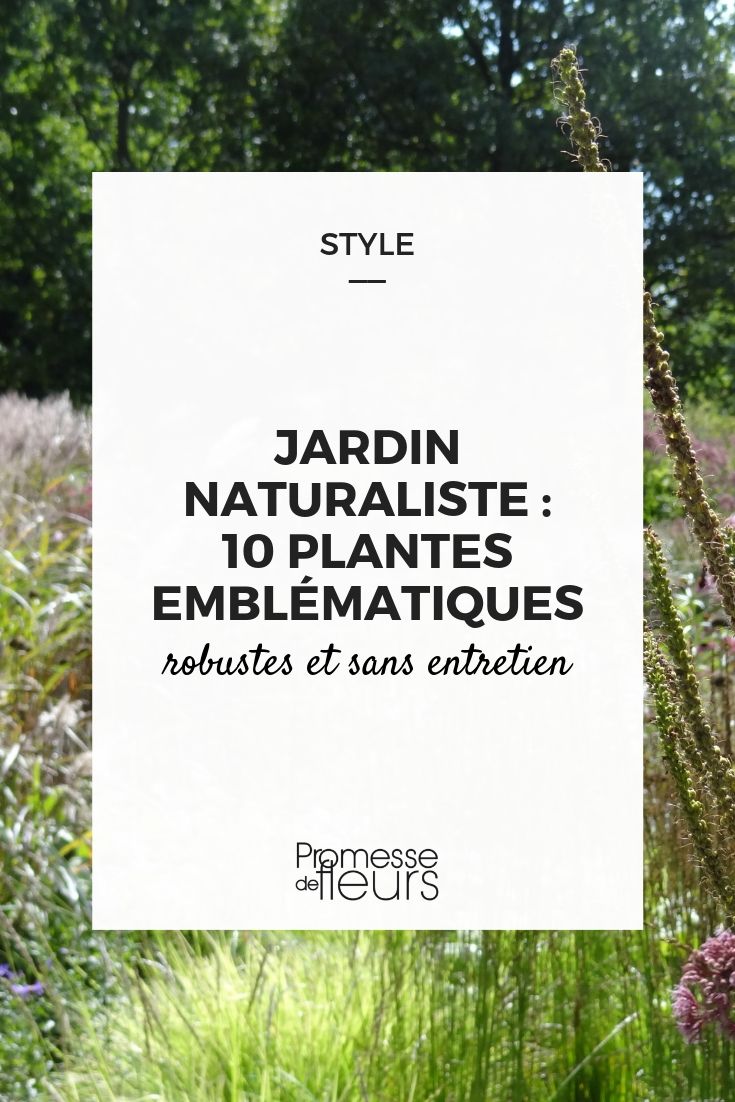































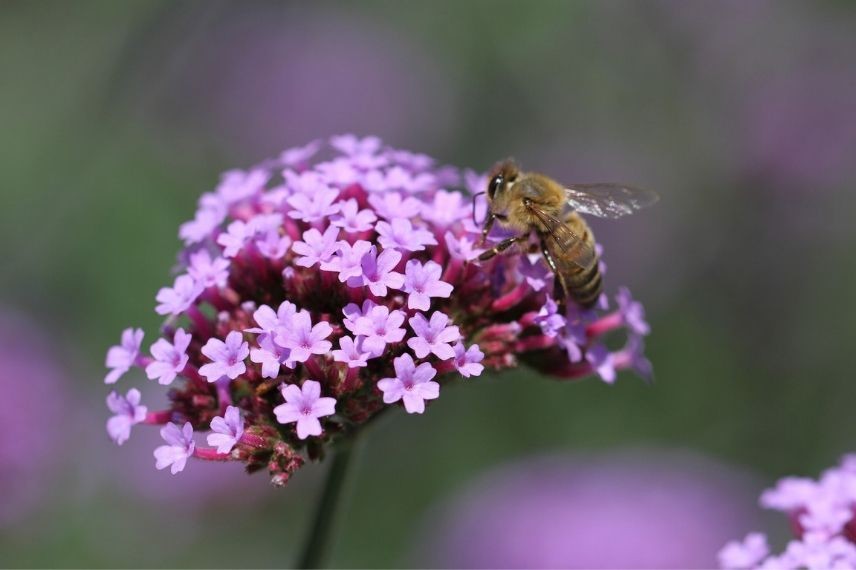
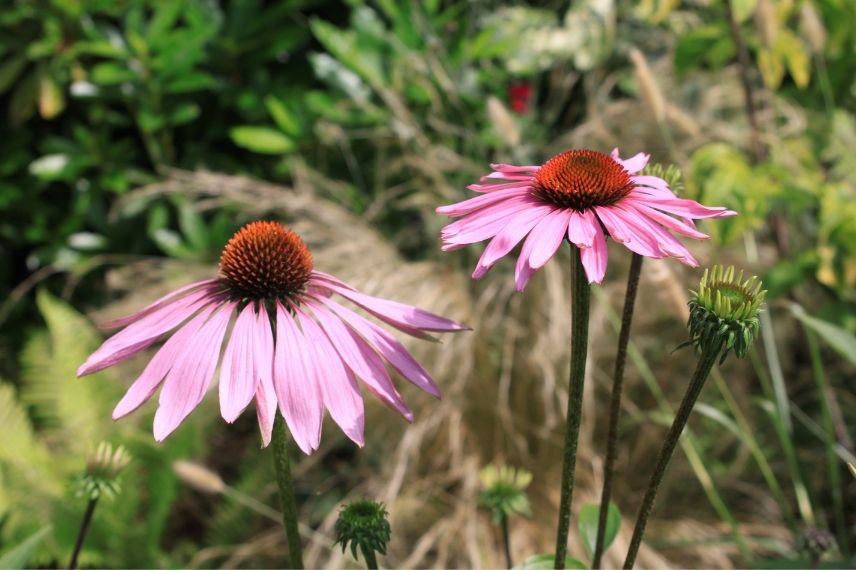
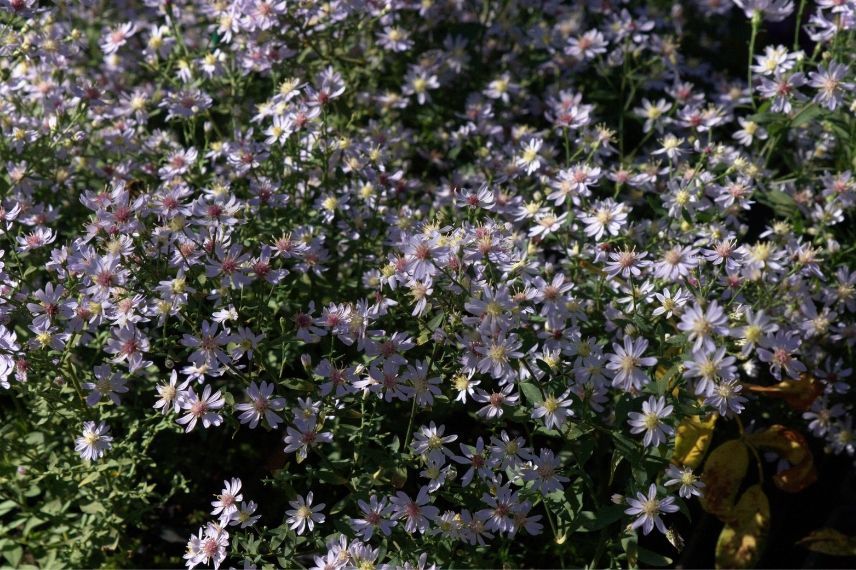
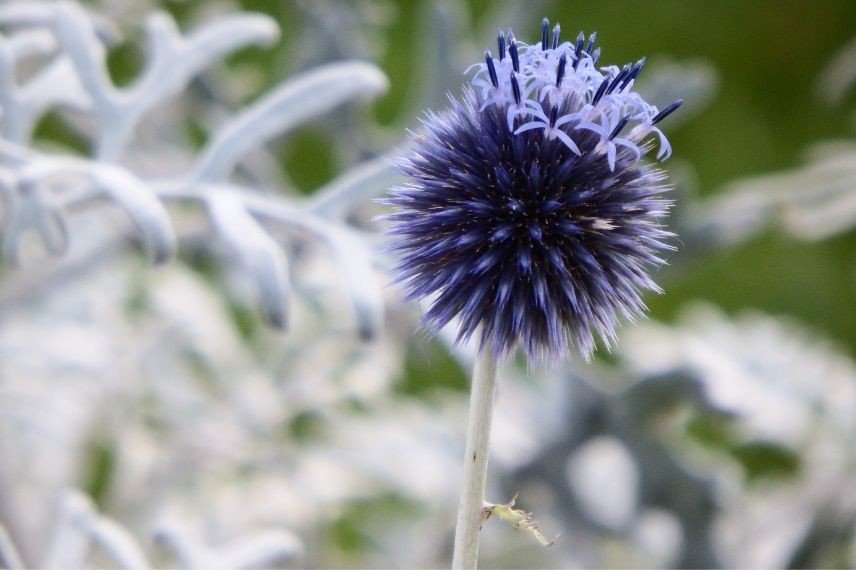
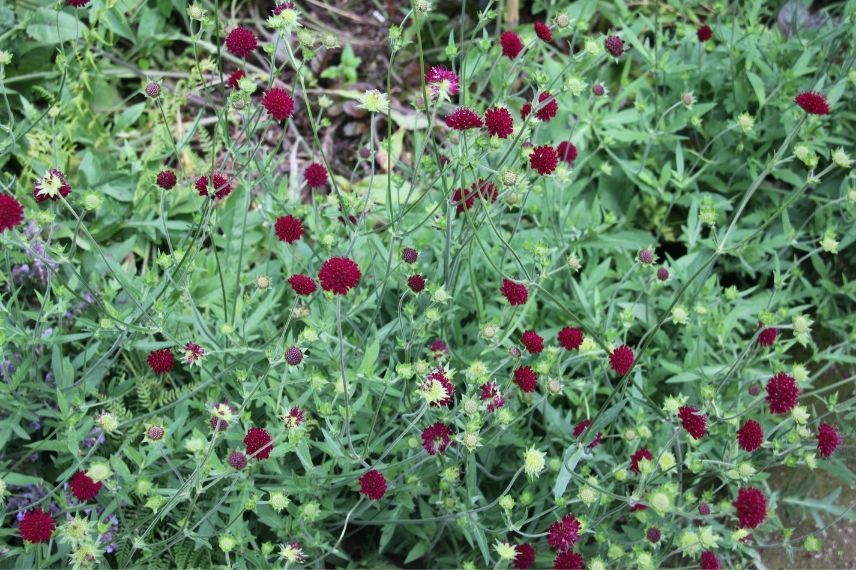
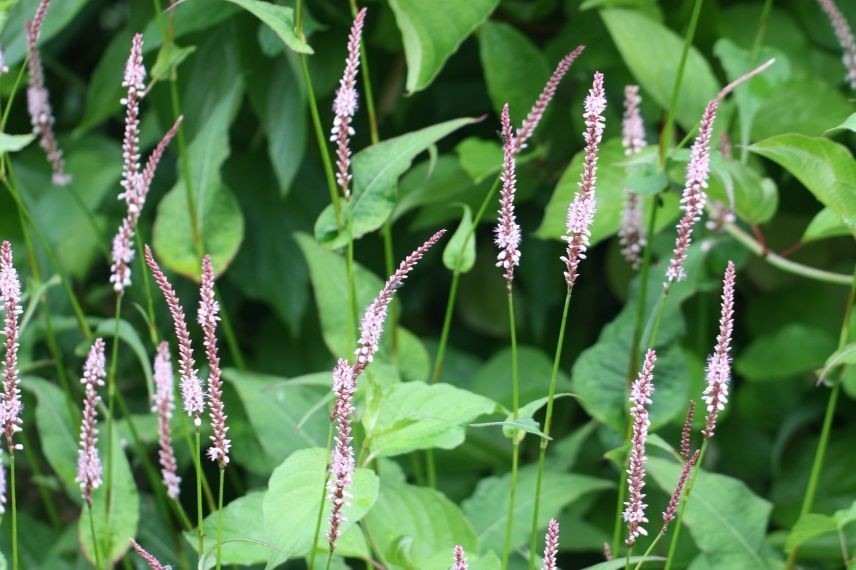
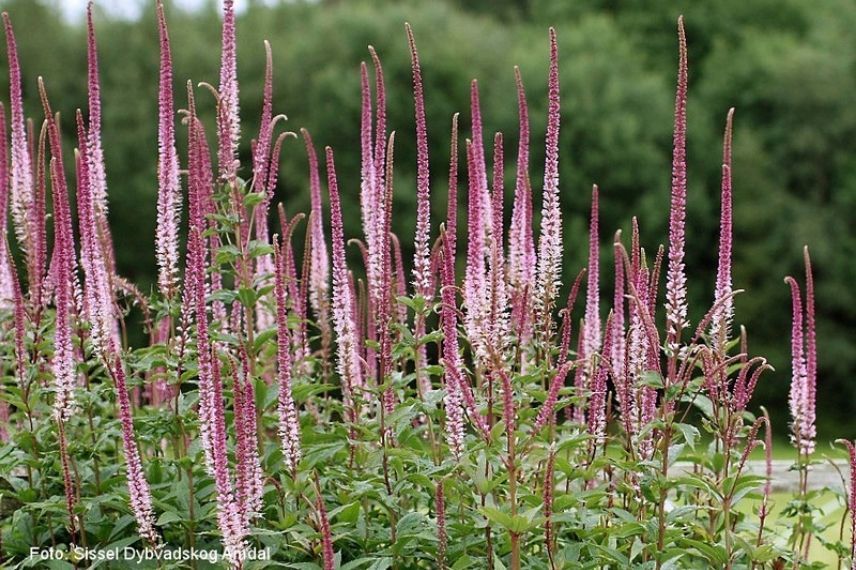
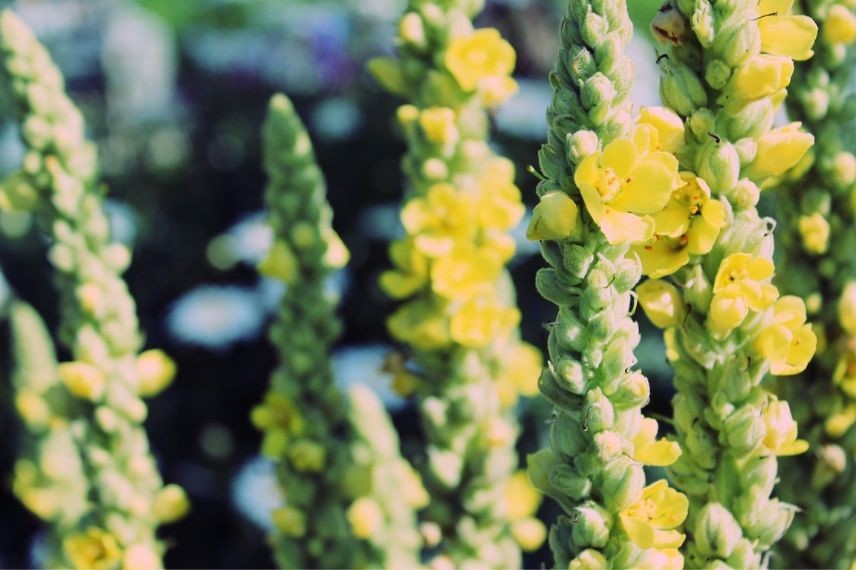
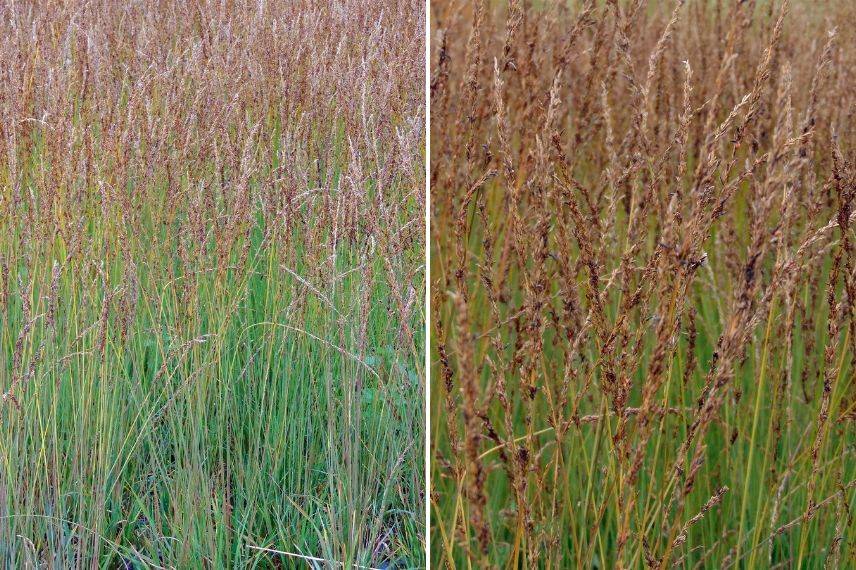
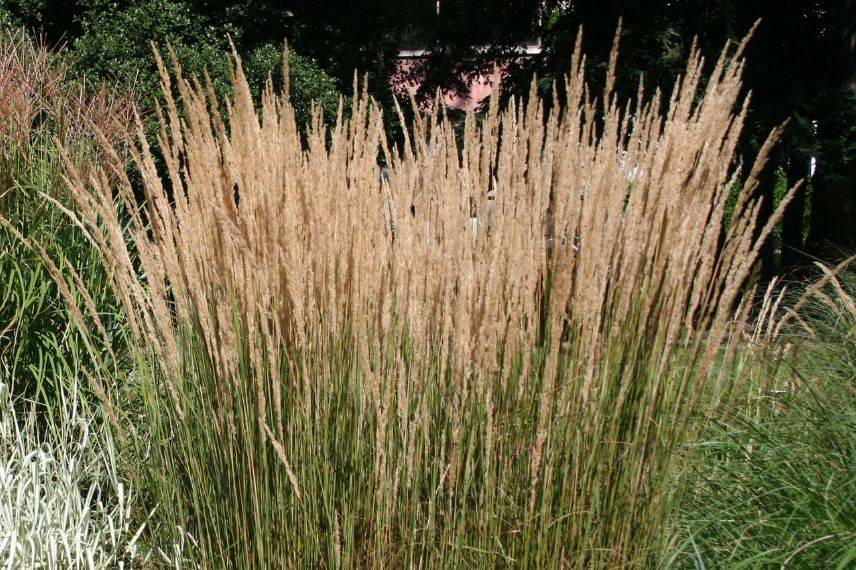
Feedbacks